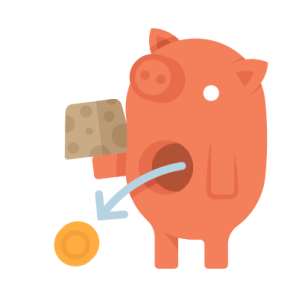The Self Assessment scheme is for the self-employed,
or when tax cannot be collected via PAYE

In this section:
Find out who needs to use the Self Assessment system, how it works, plus tips for managing your tax affairs, and where to get help if you need it.
There’s also an update on Making Tax Digital, which will eventually replace Self Assessment.

Under the Self Assessment scheme, it is the taxpayer’s responsibility to file a tax return and pay the appropriate Income Tax and National Insurance contributions directly to HMRC. So make sure you fully understand your tax responsibilities, the key dates and deadlines, and what deductions can be offset against your income (tax reliefs and tax allowances).
Who needs to Complete a Tax Return?
There are many reasons why you might need to submit a tax return, it’s not just for the self-employed:
If you are self-employed, you must register with HMRC and you will then need to complete an annual Self Assessment tax return, whether you are making a profit or loss.
If you work for an employer, tax is normally deducted automatically from your salary through PAYE (Pay As You Earn scheme), therefore most employees will not be required to complete a tax return.
However, there are some situations where you may also need to file a return: if your salary is taxed via PAYE, but you have additional untaxed income from other sources, you must notify HMRC and you may have to pay some tax via Self Assessment e.g. if you earn extra money from freelancing, renting out a room or income from abroad.
If you are unemployed but received income, you may need to pay tax through Self Assessment.
Anyone who receives a Self Assessment tax form or a notice to file online is legally obliged to submit a return to HMRC (even if there is no tax to pay), otherwise you could face a fine of at least £100.
If you don’t think you need to submit a tax return (e.g. you pay all your tax through PAYE, or you’re not earning), you can call HMRC and ask them to cancel the tax return.
Call HMRC: 0300 200 3300
Reasons why you may need to file a tax return
- You are self-employed, and earned over £1,000 (before deducting things you can claim tax relief on)
- You are a company director (unless it was a non-profit organisation and you received no pay nor benefits e.g. company car or medical insurance)
- You are a partner in a business partnership
- You earned over £2,500 in untaxed income e.g. from freelancing, tips or commission, or renting out property
- Your income (or your partner’s) was over £50,000 and one of you claimed child benefit
- You earned income from abroad, or you lived abroad and have a UK income
- Your taxable income was over £100,000
- You earned over £10,000 (before tax) from savings, investments or dividends
- You receive income from a trust or settlement, or from an estate where additional tax is owed
- You owe Capital Gains Tax on the profit you made from selling certain investments like valuables, shares or a second home.
- You received an HMRC P800 form saying you owe tax from last year (and you haven’t yet paid it through voluntary payments or a tax code adjustment)
- You can also complete a tax return if you want to make voluntary National Insurance Contributions (NICs) to help you qualify for benefits such as the State Pension or Maternity Allowance.
Source: MoneyHelper
You can check whether you need to complete a Self Assessment tax return by using this HMRC tool
or call HMRC: 0300 200 3300

Self Assessment Scheme
This is the current system for people not yet enrolled on the new government Making Tax Digital scheme:
- Register for Self Assessment.
- Complete an annual tax return (paper or online):
Report details of all your taxable income/business profits and any capital gains.
Claim tax allowances and tax reliefs. - HMRC use this information to calculate your tax bill or work out whether you are due a tax refund. They will rectify any under/over-payments from the previous tax year.
- Pay any Income Tax, National Insurance and Student Loan Repayments owing, on time, directly to HMRC.

10 Tips to Manage Your Tax Affairs
Register for self assessment as early as possible
If you need to file a tax return for the first time, you will need to register with HMRC first, to get a Unique Taxpayer Reference (UTR). This 10 digit number is then used by HMRC to identify you (or your company). You will be enrolled for the online Self Assessment service at the same time. The registration process can take several weeks, so allow plenty of time in order to meet the deadlines for tax returns and payments.
Register for Self-Assessment if you are self-employed, or if you are not self-employed but need to send a tax return e.g. because you receive income from renting out a property.
Meet deadlines
If you need to send in a tax return, you fill it in after the end of the tax year (5 April) that it applies to. (So if you earned untaxed income between 6 April 2022- 5 April 2023, you will need to file a return for tax year 2022-23).
Deadlines for the last tax year: 6 April 2022 – 5 April 2023
| Self Assessment | Deadline |
| Register for Self Assessment | 5 October 2023 |
| Paper tax returns to HMRC | 31 October 2023 |
| Online tax returns | 31 January 2024 |
| Pay the tax you owe | 31 January 2024 |
Source: Self Assessment tax returns: GOV.UK
HMRC must receive your tax return and any money you owe by the deadlines, or you could face penalties for a late tax return (£100) even if you have no tax to pay, and you may be charged interest on any overdue tax.
Self Assessment payment helpline
0300 200 3822
Call HMRC if you have missed your tax payment date

Get organised
Preparation early on will make life easier when it comes to filing your tax return:
- Consider opening a business bank account to keep your business and personal finances separate.
- Use business accounting software, an app, or spreadsheet to keep track of your accounts. Note if you are self-employed, you are obliged to keep accurate records of all income and outgoings for your business.
- Keep all receipts for tax-deductible business expenses (relating to the running of your business).
When you plan to complete your tax return, have all the necessary information to hand:
- If you require statements from banks or other third parties, request them in good time.
- If you have income from employment or a pension, collect the details for these income sources e.g. your PAYE tax code, payslips, P60 or P45 form.
- You will also need tax certificates for investments.
- For self-employed earnings, you will need bank statements, records of income, sales invoices, receipts for expenses etc.
Declare all taxable income
You have to include all sources of income (however small), that has not already been taxed e.g. interest from savings, dividends from investments, rental income, pensions, earnings from freelancing, overseas income, capital gains.
Note if you are self-employed, you include all these sources of your income on your tax return (not just your business profits from self-employment).
You do not have to include tax-free income e.g. interest from ISAs.
Take advantage of tax allowances & tax reliefs
Tax allowances
Each of us is entitled to a slice of annual tax-free income (Standard Personal Allowance for 2022-23 and 2023-24 tax years = £12,570). You can also earn an amount of tax-free savings interest and dividends payments, and you may be entitled to other allowances depending on your circumstances.
Tax reliefs
Tax reliefs enable you to deduct certain payments from the income you make, so you pay less tax.
For employees, allowable expenses are those you have to pay for your work e.g. uniform, tools and travel costs, or membership of professional bodies required for employment.
For self-employed, tax-deductible expenses include most day-to-day costs associated with running your business e.g. renting premises, supplies, financing, staff, running a car etc.
Check what tax allowances and reliefs can be set against your taxable income to reduce your tax liability.
Tax-free income, allowances, tax reliefs – Which?
Pay the correct National Insurance
You pay National Insurance contributions (NICs) to qualify for various benefits, such as the State Pension, Maternity Allowance and Job Seekers Allowance. The onus is on each individual to check your NICs and make sure you are paying the correct amount. The rates and allowances are complex, so to check what you should pay, see National Insurance contributions – GOV.UK

Don’t forget your student loan
Once you start earning over the repayment threshold (£27,295 a year if you have a Plan 2 loan, £25,000 if you’re on Plan 5), you will need to start repaying your student loan via the tax system. If you pay tax through Self Assessment, you must tick the Student Loan box on your tax return. HMRC will calculate the amount to be repaid along with your tax bill.
You can check your loan repayments and balance via the Student Loans Company website, and you can apply for a refund if you have overpaid. Make sure you keep them informed of your contact address and employment information, because otherwise they might impose a penalty interest rate for ‘failing to respond to requests for information or “losing touch” with the company.’
Keep it official
If you file your tax return online, make sure you use the official free GOV.UK site.
Beware of copycat sites who may charge hefty fees for the service!
While you’re completing your tax return, you can save and go back to it any time.
Budget for tax payments
 The deadline for paying any tax you owe is 31 January, and there are penalties for late payments.
The deadline for paying any tax you owe is 31 January, and there are penalties for late payments.
If you’re self-employed, use the HMRC Ready Reckoner tool to estimate your Income Tax and National Insurance bill, and work out how much money to put aside each month, so you have funds available to pay your tax on time.
For other taxpayers, use this Tax Calculator to work out roughly what you will owe for the year in Income Tax, National Insurance, pension contributions and Student Loan repayments, and how much is left as take-home pay.
Get help & advice
Our guide gives general tax information, but you should seek help and advice relevant to your own circumstances. Our list includes fee-charging professional tax advisers, but many of the listed sources are free, so do check them out if you’re struggling with tax matters.

Self Assessment for Self-Employed
There are various ways of working for yourself, as a sole trader, business partnership or limited company, all of which have different tax rules and procedures.
Check here to see if your work counts as self-employment for tax purposes
or call HMRC: 0300 123 2326
Register as self-employed
As soon as you become self-employed, you should register with HMRC (so that they know how much you are earning and can collect the appropriate tax and National Insurance contributions). Legally, you must register by 5th October of your business’s second trading year.
The system differs depending on whether you are a registering as sole-trader, as a business partnership, or if you set up a limited company.
Register online
or call HMRC Newly Self-Employed Hotline: 0300 200 3504
Keep adequate records
When you are self-employed, you must keep records of all money coming in and going out of your business (receipts, invoices, bank statements etc.). HMRC might ask to see documents. Regular book-keeping will make it easier to fill in your tax return correctly. Business accounting software or apps could help keep track of income and outgoings, with a running estimate of your tax bill as the year goes on.
Complete an annual Self Assessment tax return
Once you have registered, you will need to complete an annual tax return, whether you are making a profit or loss.
If you stop being self-employed, you need to tell HMRC, otherwise you will still be expected to file a tax return (and you may be fined if you don’t complete one).
Income tax
As a self-employed person, you are taxed on your business profits not the business income.
In basic terms:
Yearly income
LESS business expenses
LESS tax reliefs & allowances (e.g. for investment and capital)
LESS losses (carried over from previous years)
= Taxable profits
However, your tax return also needs to include all sources of personal income (not just that relating to self-employment) e.g. any income from employment, savings interest, capital gains etc.
National Insurance contributions (NICs)
National Insurance contributions help to pay for the NHS, and various benefits including the State Pension and Universal Credit. Your entitlement to certain benefits is based on the contributions you have made.
If you are self-employed and earning sufficient profits, you will need to pay National Insurance contributions as well as Income Tax.
Find out how much National Insurance you need to pay
VAT – Value Added Tax
VAT is a tax on goods and services, currently @ 20%.
If your annual turnover is above the VAT threshold (currently £85,000), you must register for VAT. You can choose to register for VAT even if your turnover is below the threshold, but you need to consider whether it is the right option for your business. If you are registered for VAT, you will have to charge VAT on your goods and services, but you can usually claim VAT back on purchases you make for your business. You will be required to keep digital records and use approved software to submit regular VAT returns.
How VAT works – GOV.UK
Find out if you should register for VAT & learn about your responsibilities as a VAT registered business
See our general tips for managing Self Assessment tax affairs.
Self Assessment Sources of Help
If your tax affairs are complex, you might need an accountant to do your tax return or give you specific advice.
For most general enquiries, visit HMRC Self Assessment Help
Or call the Self Assessment helpline 0300 200 3310
How to fill in a self-assessment tax return – MoneyHelper
Tax Aid charity
Help with Tax – HelloGrads
Useful contacts & online resources plus a jargon buster for tax terms
Tax Tool
Self-employed Ready Reckoner Tool – HMRC
Estimate your Tax and National Insurance bill
Work out a monthly amount to set aside for tax payments
HMRC webinars, videos & e-learning
Self Assessment Tax Returns
Explains the process for completing your tax return online
Self-Employment
Helpful guides if you are starting a new business, including what expenses & allowances you can claim etc.
Other online guides
Tax Guide for Self-Employment – HMRC
Helpful guide if you are starting a business
Tax & National Insurance (For Self-Employed) – MoneyHelper
Free advice online, web chat, phone or social media
Tax for the Self-Employed – Which?
Making Tax Digital
 Over the next few years, Self Assessment will be superseded by a new digital tax system. The Government plans to ‘make it easier for individuals and businesses to get their tax right and keep on top of their affairs’. Businesses and individual taxpayers will be able to register, file, pay and update their information online, meaning there would be no need to fill in an annual tax return.
Over the next few years, Self Assessment will be superseded by a new digital tax system. The Government plans to ‘make it easier for individuals and businesses to get their tax right and keep on top of their affairs’. Businesses and individual taxpayers will be able to register, file, pay and update their information online, meaning there would be no need to fill in an annual tax return.
Who will it affect?
If you work for an employer and are solely on PAYE, you will not be affected.
The new system applies to people who would currently use Self Assessment e.g. businesses, self-employed, landlords and others who have untaxed income.
Current status
The Government has already introduced the Personal Tax Account for individuals to manage their tax affairs online (similar to online banking).
For businesses, the transition is being rolled out more slowly, owing to concerns from small businesses. Most VAT registered businesses do now have to comply with the Making Tax Digital for VAT rules. The current plan is to phase in Making Tax Digital for Income Tax from April 2026.
Note if you are not enrolled on the new digital scheme, you will need to file an annual Self-Assessment tax return, as explained above.
Find out more:
